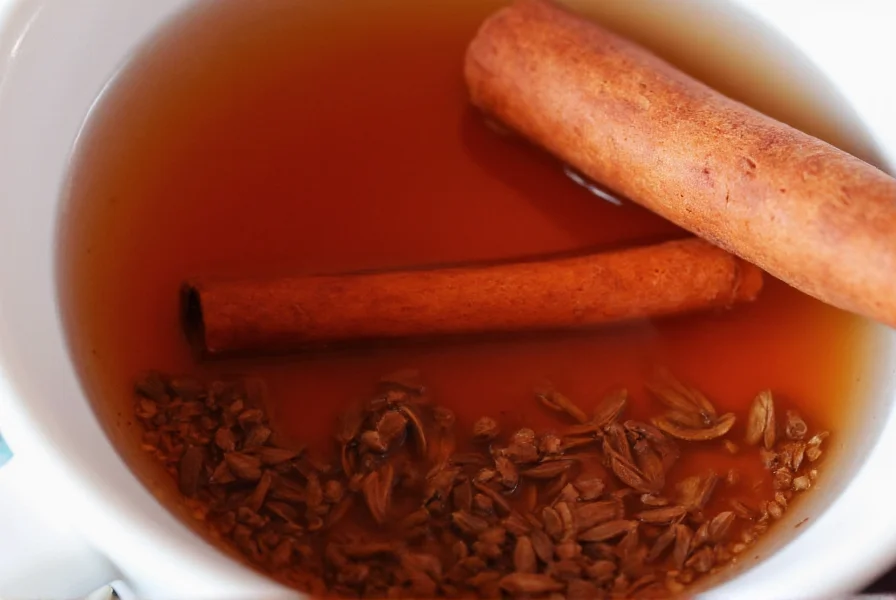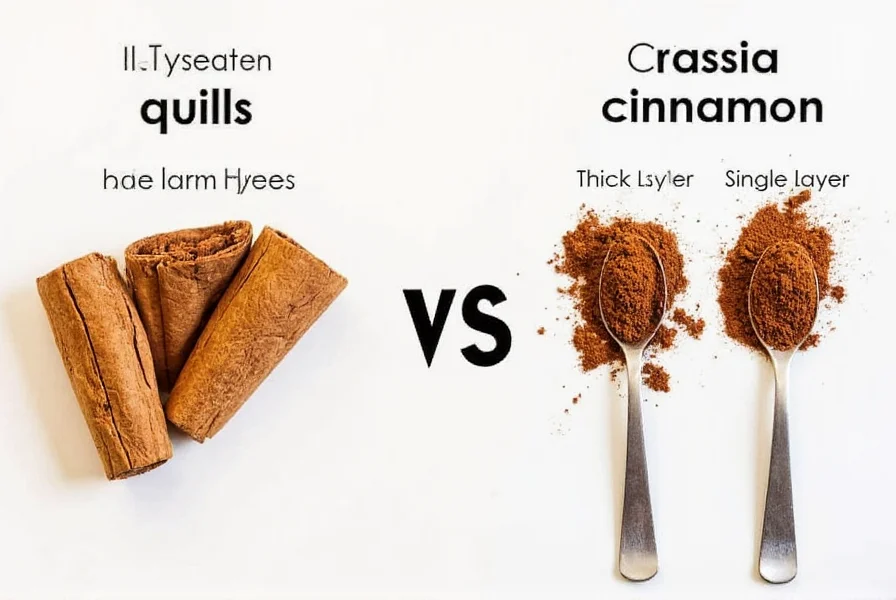For centuries, cultures worldwide have combined tea and cinnamon for both flavor and wellness. This dynamic pairing brings together two of nature's most studied botanicals, creating a beverage that's not only delicious but potentially beneficial for your health. Modern research is now validating what traditional medicine has long understood about this complementary relationship between tea compounds and cinnamon's active components.
The Science Behind Tea and Cinnamon Synergy
Tea contains polyphenols like EGCG (epigallocatechin gallate) in green tea and theaflavins in black tea, which are potent antioxidants. Cinnamon contributes cinnamaldehyde, its primary active compound responsible for many of its health properties. When combined, these compounds may work synergistically, potentially enhancing each other's bioavailability and effectiveness.
A 2020 review published in Nutrients highlighted that cinnamon's compounds may help improve insulin sensitivity, while tea polyphenols support metabolic health. The combination creates a beverage with complementary mechanisms that may support overall wellness when consumed as part of a balanced diet.
Evidence-Based Health Benefits
Research suggests several potential benefits of regularly consuming tea with cinnamon, though it's important to understand the current scientific limitations:
- Blood sugar regulation: Multiple studies, including research in the Journal of the Academy of Nutrition and Dietetics, indicate that cinnamon may help moderate post-meal blood glucose spikes. When paired with tea's polyphenols, which also show blood sugar benefits, this combination may offer complementary support for metabolic health.
- Antioxidant properties: Both ingredients are rich in antioxidants. A study in Food Chemistry found that cinnamon and tea together demonstrated higher total antioxidant capacity than either alone.
- Anti-inflammatory effects: Chronic inflammation is linked to numerous health concerns. Research in Molecular Nutrition & Food Research suggests both tea polyphenols and cinnamon compounds may help modulate inflammatory pathways.
- Heart health considerations: Some evidence suggests this combination may support healthy cholesterol levels and blood pressure, though more research is needed specifically on the combined effect.
It's crucial to note that while promising, most research examines these ingredients separately. Tea and cinnamon should be viewed as complementary to, not replacements for, medical treatments or a balanced diet.
Best Tea Varieties to Pair with Cinnamon
Not all teas pair equally well with cinnamon. The right combination depends on your taste preferences and health goals:
| Tea Type | Best Cinnamon Pairing | Flavor Profile | Recommended Use |
|---|---|---|---|
| Black Tea | Ceylon cinnamon | Robust, spicy-sweet | Daily morning beverage, especially with breakfast |
| Green Tea | True Ceylon cinnamon | Delicate, floral with warm spice | Afternoon refreshment, maximum antioxidant benefit |
| Rooibos | Ceylon or Cassia | Naturally sweet, earthy | Evening drink, caffeine-free option |
| Chamomile | Ceylon cinnamon (small amount) | Mellow, floral with subtle spice | Before bedtime, relaxation focus |
Black tea provides the strongest base for cinnamon's flavor, creating a robust beverage similar to traditional chai but without additional spices. Green tea offers a more delicate pairing where cinnamon enhances rather than dominates the flavor profile. For those avoiding caffeine, rooibos or herbal teas make excellent cinnamon companions.

Optimal Preparation Methods
How you prepare tea with cinnamon significantly affects both flavor and potential benefits:
- Choose quality ingredients: Opt for loose-leaf tea over tea bags for better flavor and potentially higher polyphenol content. Select Ceylon cinnamon (true cinnamon) over Cassia when possible, as it contains lower levels of coumarin.
- Proper ratios: Use 1 teaspoon of ground cinnamon or 1 small cinnamon stick per 8-12 ounces of water. Too much cinnamon can overwhelm the tea's flavor and potentially cause irritation.
- Timing matters: Add cinnamon to the water before bringing it to a boil, then remove from heat just before boiling. Add tea leaves and steep for 3-5 minutes (green tea) or 4-6 minutes (black tea).
- Temperature control: For green tea, bring water to 175°F (80°C) before adding both cinnamon and tea to preserve delicate compounds.
- Enhancements: A small amount of healthy fat (like a teaspoon of coconut milk) may improve absorption of fat-soluble compounds.
Avoid boiling cinnamon for extended periods, as this can degrade some beneficial compounds and create a bitter taste. For best results, strain the tea before drinking to remove cinnamon particles.
Safety Considerations and Practical Tips
While generally safe for most people, there are important considerations when regularly consuming tea with cinnamon:
- Cassia vs. Ceylon: Most supermarket cinnamon is Cassia, which contains higher levels of coumarin. Long-term excessive consumption may affect liver health in sensitive individuals. Ceylon cinnamon (Cinnamomum verum) contains significantly less coumarin and is preferable for daily use.
- Recommended amounts: Limit to 1-2 cups daily, using no more than 1 teaspoon of ground cinnamon per serving. This keeps coumarin intake within safe limits for most people.
- Medication interactions: Cinnamon may interact with blood thinners and diabetes medications. Consult your healthcare provider if you take these medications regularly.
- Pregnancy considerations: Moderate consumption is generally considered safe during pregnancy, but excessive amounts should be avoided.

Creative Variations to Explore
Once you've mastered the basic preparation, try these evidence-informed variations:
- Morning metabolism boost: Black tea with cinnamon, a slice of fresh ginger, and a squeeze of lemon
- Evening relaxation blend: Chamomile tea with a small piece of Ceylon cinnamon and a touch of honey
- Post-workout recovery: Green tea with cinnamon and a pinch of turmeric (add black pepper to enhance absorption)
- Seasonal immune support: White tea with cinnamon, cloves, and orange peel (use sparingly during cold season)
Remember that adding multiple ingredients can affect both flavor balance and potential interactions, so introduce new elements one at a time to understand their individual effects.
Conclusion
The combination of tea and cinnamon represents a simple yet potentially powerful addition to a healthy lifestyle. By understanding the science behind this pairing, selecting appropriate tea varieties, and preparing it correctly, you can enjoy both the flavor and potential wellness benefits. While not a miracle cure, this ancient combination offers a delicious way to incorporate two well-studied botanicals into your daily routine. As with any dietary change, consistency and moderation yield the best results, and it's always wise to consult with a healthcare provider about significant changes to your diet.
Frequently Asked Questions
What's the best time of day to drink tea with cinnamon?
Black tea with cinnamon works well in the morning as it contains caffeine and may help moderate blood sugar response to breakfast. Green tea with cinnamon is better suited for afternoon consumption due to its lower caffeine content and higher antioxidant profile. Avoid caffeine-containing versions in the evening if you're sensitive to caffeine.
How much cinnamon should I use in my tea for health benefits?
For daily consumption, use ½ to 1 teaspoon of Ceylon cinnamon per 8-12 ounce serving. This amount provides potential benefits while keeping coumarin intake within safe limits. Cassia cinnamon should be used more sparingly (¼ to ½ teaspoon) due to its higher coumarin content. Remember that consistency matters more than quantity - regular moderate consumption is better than occasional large doses.
Can I drink tea with cinnamon if I have diabetes?
Many people with diabetes enjoy tea with cinnamon as part of their routine, but it's important to consult your healthcare provider first. Research suggests cinnamon may help moderate blood sugar, but it shouldn't replace prescribed diabetes medications. If approved by your doctor, monitor your blood sugar carefully when adding this to your routine, as it may enhance the effects of your medication.
Does adding milk to tea with cinnamon affect the health benefits?
Adding a small amount of milk or plant-based alternative generally doesn't significantly reduce the benefits of tea with cinnamon. Some research suggests that milk proteins might bind to certain tea compounds, but the overall impact on health benefits appears minimal. If maximizing antioxidant absorption is your goal, consider adding a healthy fat like a teaspoon of coconut milk rather than dairy, as some beneficial compounds are fat-soluble.
How long should I steep cinnamon in tea for maximum benefits?
Add cinnamon to the water before heating and let it steep for 3-5 minutes with the tea leaves. Extended boiling (beyond 10 minutes) can degrade some beneficial compounds and create a bitter taste. For optimal results, bring water with cinnamon to just below boiling, remove from heat, add tea leaves, and steep for the recommended time for that tea type (3-5 minutes for green, 4-6 for black).










 浙公网安备
33010002000092号
浙公网安备
33010002000092号 浙B2-20120091-4
浙B2-20120091-4